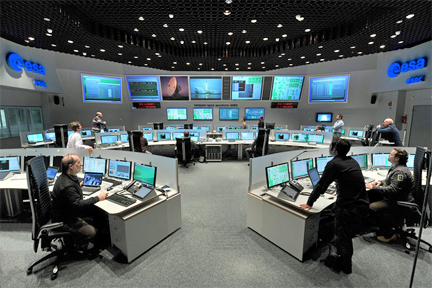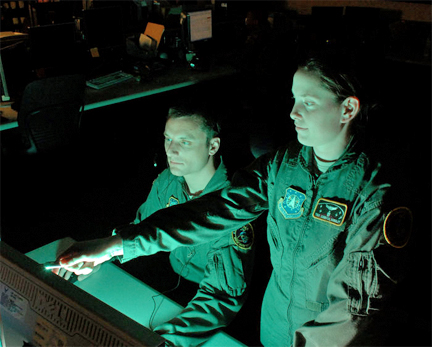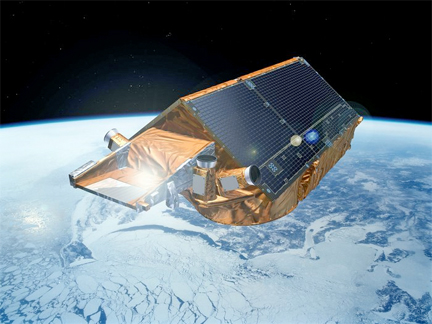
[SatNews] Improved collision warnings for its Earth observation missions means ESA controllers can now take more efficient evasive action when satellites are threatened by space junk.

ESA’s European Space Operations Centre, ESOC, is the control centre for ESA missions, and hosts our Main Control Room (shown here), combined Dedicated Control Rooms for specific missions and the Estrack Control Centre, which manages our worldwide ground tracking stations. ESOC also hosts facilities for satellite communications, navigation, networks and other special functions.
Image is courtesy of ESA—J. Mai.
ESA signed an agreement today with the US Strategic Command to improve data exchange between the organizations for supporting missions. The tie-up will see ESA receiving higher quality and more timely space information tailored to its needs in exchange for sharing more accurate positional information of its satellites. Engineers at ESA’s Space Operations Centre, ESOC, in Darmstadt, Germany, currently control five satellites in low orbits and expect six more to join them in the next few years.
“The agreement improves ESA’s operations in low orbital altitudes, an environment that is contaminated with numerous pieces of debris from recent fragmentation, at a time when we are about to significantly increase the number of active missions in this orbit,” said ESA Director General Jean-Jacques Dordain. “The more timely and customizable data exchange enabled by this agreement will improve collision avoidance as well as launch and early operations for our missions.”
ESA have already been receiving U.S. data and predictions on possible ‘conjunctions’ for some time, but could not request customized data. Under the new arrangement, ESA can request specific surveillance information and receive it in a timely manner.

The US Joint Space Operations Center (JSPOC) is located at Vandenberg Air Force Base, California, USA, and has long provided debris avoidance warnings to ESA and other satellite operators.
U.S. Air Force photo/Airman 1st Class Antoinette Lyons.
“We will now get clearly defined data upon requests we submit to the US Joint Space Operations Centre at Vandenberg Air Force Base, California. We also look forward to faster responses,” says Holger Krag, Head of ESA’s Space Debris Office. “In time-critical scenarios like a degraded orbit injection after launch or sudden loss of contact with one of our missions, there will be fewer formalities and shorter time until we get the data we’d like.”
With earlier warning of potential close calls, controllers will be able to plan avoidance maneuvers at the working level better. This will reduce the workload and allow collision avoidance manoeuvres to be merged with other, routine maneuvers, cutting fuel usage.
“As more countries, companies and organizations field space capabilities and benefit from the use of space systems, it is in our collective interest to act responsibly, to promote transparency and to enhance the long-term sustainability, stability, safety and security of the space joint operating area,” said Admiral Cecil D. Haney, head of U.S. Strategic Command.
In exchange for the improved service from the U.S. side, ESA will provide information on planned orbit maneuvers, which will allow fine-tuning of the US surveillance approach. This, in turn, will generate more accurate and updated information for ESA. The more timely and customizable data exchange will improve collision avoidance as well as launch and early orbit operations by ESA.

The CryoSat mission provides data to determine the precise rate of change in the thickness of the polar ice sheets and floating sea ice. It is capable of detecting changes as little as 1 cm per year. The information from CryoSat is leading to a better understanding of how the volume of ice on Earth is changing and, in turn, a better appreciation of how ice and climate are linked.
Image is courtesy of ESA—P. Carril.
ESA missions perform four to six debris avoidance maneuvers each year, and this number has been on the increase. The latest conducted by ESOC was performed by CryoSat-2 on October 7th to avoid a fragment of Cosmos-2251, which had collided with the Iridium-33 satellite in 2009.
To learn more about ESA, please visit http://www.esa.int/

